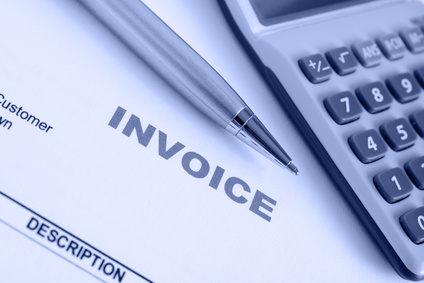The International Trade Blog Import Procedures
Importing Basics: Commercial Invoice
On: May 8, 2005 | By:  John Goodrich |
5 min. read
John Goodrich |
5 min. read
 The commercial invoice is the primary document Customs uses to ascertain classification, valuation and, ultimately, duty payments owed on each imported shipment. Customs may demand to review the commercial invoice prior to clearing cargo for entry into the United States.
The commercial invoice is the primary document Customs uses to ascertain classification, valuation and, ultimately, duty payments owed on each imported shipment. Customs may demand to review the commercial invoice prior to clearing cargo for entry into the United States.
When a Customs specialist reviews an invoice s/he will determine if the product should be allowed entry into the U.S. The specialist compares the customs entry (3461) with the description on the invoice and decides if they complement one another.
If the invoice detail is incomplete, does not support or conflicts with the HTS commodity codes on the entry, the specialist has the discretion to deny entry, inspect the cargo or request additional information from the importer. All of these options cause delays for the importer at the border.
Best-in-class importers take steps to ensure their vendors’ commercial invoices comply with Customs’ invoice requirements.
What are the requirements?
Detailed invoice requirements are found within the customs regulations:
- 19 CFR § 141.86 Contents of invoices and general requirements.
- 19 CFR § 141.87 Breakdown on component materials.
- 19 CFR § 142.6 Invoice requirements.
I encourage you to familiarize yourself with the source documents referenced above. Briefly recapped these regulations require an invoice to include:
1. Terms of Sale
a. Date of sale
b. Place of sale
c. Seller name & address
d. Buyer name & address
2. Shipment Terms
a. Date of shipment
b. Place of shipment
c. Destination port
d. Shipper’s name
e. Receiver or consignee’s name
3. Merchandise Details
a. A detailed description of the merchandise supporting the HTS classification.
b. Shipping and packaging marks and numbers detailing contents of each package
c. Quantities in weights and measures
d. Country of origin
e. HTS Classification
4. Value of the merchandise
a. Unit and total purchase price
b. Currency of the sale
c. If not specifically included in the purchase price all charges including cost of packing, cases, containers, and inland freight to the port of exportation.
d. All rebates or commissions
e. All goods or services furnished for the production of the merchandise (e.g., assists such as dies, molds, tools, engineering work) not included in the invoice price.
f. Any discount allowed on the price of the merchandise
5. Name of a responsible employee of the exporter, who has knowledge, or who can readily obtain knowledge, of the transaction.
6. Finally the invoice must be in English.
Is that all Customs wants to see on an invoice?
Usually the above information should be sufficient. There are, however, commodity specific invoice requirements detailed in the regulations: 19 CFR §141.89 Additional information for certain classes of merchandise.
Following are examples of a few of the commodities listed along with their invoice requirements.
- Glassware and other glass products (T.D. 53079, 55977)—Classifiable under Heading 7013 HTSUS--Statement of the separate value of each component article in the set.
- Handkerchiefs—(1) State the exact dimensions (length and width) of the merchandise; (2) If of cotton indicate whether the handkerchief is hemmed and whether it contains lace or embroidery.
- Machines, equipment and apparatus - Chapters 84 and 85, HTSUS—A statement as to the use or method of operation of each type of machine.
- Machine parts (T.D. 51616)—Statement specifying the kind of machine for which the parts are intended, or if this is not known to the shipper, the kinds of machines for which the parts are suitable.
The additional information may seem excessive and perhaps a bit silly to those who are not familiar with these commodities. The additional information is required, however, to aid in making an accurate HTS classification decision.
Also found within this subsection of the regulations are invoice requirements for other commodities such as:
- Metals and their alloys
- Bearings
- Textiles & Articles of Textiles
- Footwear
- Gloves
I strongly urge you to review §141.89 to discover if your commodity is subject to specific invoice reporting requirements.
Are your commercial invoices helping or hindering your import process?
If your company experiences a high degree of rejected entries and inspections upon entry into the US your commercial invoice may be to blame.
The most common invoice errors surround product descriptions. The best product descriptions should be modeled after the commodity descriptions found within the Harmonized Tariff.
The worst descriptions are those that confuse the reader. For example, an automatic rewinding garden hose reel might be described as “auto rw hose rl” on the invoice. This description might be understood by buyer and seller but could be misconstrued as a hose intended for installation on a car.
I encourage you to review my sample invoice as a model for your vendor invoices.
If you review this example invoice against the requirements above, you will find it complies. The observant among you will notice that packing details are missing. The packing list normally provided with most shipments will contain the detail required to identify the contents of each package.
Indeed, any data requirements that do not fit on the commercial invoice itself will be satisfied by inclusion on a supplementary document attached to the commercial invoice.
How does my company get control of the process?
It has been my experience that suppliers are eager to comply with documentary requirements as long as they are given specific instructions. I recommend the following:
- Provide your supplier with a template of the invoice format you would like them to use. You are welcome to modify the sample invoice I cited above to meet your unique requirements.
- Use clear, generic product descriptions within your purchase order to your supplier and require them to reflect the same description within their commercial invoice.
- Include your HTS commodity code within your purchase order and require that this too be reflected within the commercial invoice.
Historically some importers have found compliance with this to be problematic. Security measures requiring pre-shipment filing of manifests are driving a higher degree of accuracy with vendor applied HTS codes.
If the HTS code is not included on the invoice your broker will hand write the number on the invoice prior to submission to Customs.
The most effective method of ensuring accurate invoice content is to link vendor payment to document compliance. This measure is somewhat draconian and should be reserved as a last resort.

About the Author: John Goodrich
John Goodrich is an International Trade Consultant and Licensed Customhouse Broker with more than 25 years of experience in international trade. He is currently the principal in the consulting firm of JD Goodrich & Associates where his varied industry experience results in practical, actionable advice for his clients.
An active member in the Twin Cities round table of the Council of Supply Chain Management Professionals (CSCMP), he takes a strategic view of the roles of international compliance and logistics in the greater supply chain.

